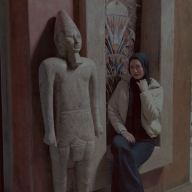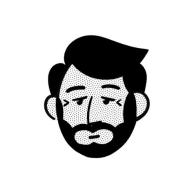SimpleBook: A Hotel Booking Site
Introduction
SimpleBook is a straightforward booking platform that allows users to reserve hotels or other accommodations during their travels. Unlike many complex booking sites, SimpleBook focuses solely on booking services, providing a clean and easy-to-navigate experience. This project was an educational endeavor completed during my time at UXDI, where I applied my passion for travel and booking to create a user-centric solution.
UNDERSTANDING THE PROBLEM:
The primary challenge was to design a hotel booking site that would meet user requirements while standing out against more complex competitors. Most existing booking platforms were overly complicated and failed to offer a seamless experience. Users often faced difficulties due to a lack of essential information and inadequate control over the booking process. This project aimed to address these gaps through a simple, yet effective, design approach.
Competitive benchmarking
The first step of the research was competitive research. To gain insights and explore our competitors, I identified 4 of them and took user flows with note-taking. In research, both market leaders and prominent local sites took part. Most of the booking sites are complex and miss the nuances, which are very painful for users, e.g. local sites don't care about language and currency variety.
Interviews
After benchmarking I continued the research with user interviews. I prepared an interview script with 26 open-ended questions, focusing on my target audiences’ values, motivations, and daily routines. I used 2 sites in each interview: 1 famous and 1 local. In 3 days, I recruited and interviewed 4 users remotely.
The questions included both about users (to understand the context) and their preferences and behaviors (to identify their goals and pain points).
Affinity diagram
Here, when raw data was arranged, I found out that:
- The first impression is crucial. The landing page and the search bar must work perfectly.
- Users need clearly designed filters and an informative map to feel in control of their booking process.
- They need complete information about the room and good photos to visualize and compare.
Customer journey map
Here, in the journey map, I structured the data by steps from making the decision to check-out. User goals, behaviors, and pain points are clear at this point. Going through the further steps, I will come back here periodically. The map revealed numerous user pain points especially in search and room selection steps. Considering these facts, I decided to pay more attention to these steps in the future.
So, after defining the user behavior, goals, and pain points through the customer journey map I learned that:
1. Users have a common issue with the calendar on the homepage.
2. Users want to see a big, informative map.
3. Users want to see a lot of photos of the hotel rooms from different angles.
4. Users want complete info about the final price and check-out.
The next step is making a USER FLOW
As the case was educational, we were asked to do the main flow, explaining the state of each step. So here is the main user flow from the homepage to the check-out page.
Sketches
After all these research steps, it's time to visualize all thoughts into sketches. The main purpose was to summarize all information and test the idea. Then I transferred the paper sketches into the computer and made some annotations for conditional stakeholders.
Wireframes
Using Balsamiq, I translated my first sketches into low-fidelity wireframes. At this stage, the wireframes were defined enough for some user testing. Based on 4 tests, I’ve made a few alterations and moved on to create high-fidelity prototypes.
UI Design
In parallel with usability testing, I created the final screens in Figma. I went back to the first iterations and compared the final results with the research data to determine whether I covered the goals.
Usability Testing
I created a functional, high-fidelity prototype of the flows using Figma. At the same time, we started recruiting subjects for the test who fit our criteria. We did 4 usability tests in the first round and 3 after iterating on the issues that we’ve identified:
problem: The add-on section is hard to find
3 of 4 users had difficulty finding the add-on section. It was on the check-out page.
solution: I decided to change the placement of the section
I replaced the add-on section and merged it with the room selection page.
Finally, I made annotations for the developers and other documentation.
Result
The final design of SimpleBook achieved the goal of creating a user-friendly, efficient booking platform that stands out from its more complicated competitors. By focusing on a research-driven, user-centric approach, I was able to craft a solution that meets both user needs and business goals. The project also provided valuable learning experiences, reinforcing the importance of thorough research and iterative design.
Thanks for watching!
You can request the Figma link of the prototype if interested.
Reviews
2 reviews
Your SimpleBook project is solid—research-backed, user-focused, and well-structured. It does a great job of simplifying the booking process while tackling common UX issues in travel platforms. Below are my thoughts on what works well, what could be refined, and a few ideas to make it even better.
🔥 What You Did Well
1️⃣ Strong Research & Competitive Analysis
You didn’t just look at competitors—you dug deep into their weaknesses and designed around real gaps. Including both global and local sites was a great move. Many designers ignore localization issues like language and currency, but you addressed them early.
✔ Your approach is smart: don’t just copy best practices—fix what’s broken.
2️⃣ Data-Driven Decisions
Your Affinity Diagram & Customer Journey Map weren’t just documentation—they actively guided your decisions. A lot of designers create these but don’t actually use them to refine their work. You did, and it shows.
✔ You designed for real user behaviours, not assumptions.
3️⃣ Iterative Design & Usability Testing
You ran multiple test rounds and actually changed your design based on feedback—this is how UX should be done.
✔ Moving the add-on section after 3/4 of users struggled with it? The right call. ✔ Testing after changes? Even better.
A lot of people stop at the first iteration—you kept improving.
4️⃣ Smart Wireframing & UI Progression
Your step-by-step approach from sketches → wireframes → final UI was structured well. Too many people jump straight into high-fidelity designs, but you got the flow right first.
✔ The final UI is clean, modern, and doesn’t overload the user.
5️⃣ Developer Handoff & Documentation
You didn’t just hand over screens—you added context for developers. This is rare in UX case studies and makes sure the product is built as intended.
✔ You’re thinking beyond just design—you’re making sure it works.
🔴 What Could Be Better
1. Search Results Need a Stronger Visual Hierarchy
Your search results are structured well but could be easier to scan. Users don’t read—they scan. Studies show that users follow an F-pattern, meaning key details like price, rating, and discounts should pop more.
📌 What could help?
- Slightly increase contrast on pricing & discounts.
- Use icons to highlight key info (e.g., “Best Seller,” “Limited Offer”).
- Let users sort by key criteria to reduce decision fatigue.
🔹 Nielsen Norman Group found that improving scanability boosts conversions by 20%.
2. Calendar Selection Feels Slow
Your usability tests already flagged issues with the calendar. 67% of users prefer a one-click date selection over opening a modal (Baymard Institute, 2023). Right now, it takes multiple taps to select dates.
📌 What could help?
- Make check-in/out selection work with one click per date.
- Add quick presets like “Weekend Trip” or “Business Stay.”
- Ensure mobile users can tap dates without zooming in.
🔹 Faster date selection = fewer drop-offs.
3. The Add-On Section Is Functional, But Not Engaging
You moved the add-on section to a better location, but users might still ignore it if it doesn’t stand out.
📌 What could help?
- Show real-time price updates when users add extras (e.g., “+ $20 for Airport Pickup”).
- Add a “Most Popular Add-Ons” section.
- Make it collapsible but visible (so it’s not overwhelming but easy to access).
🔹 Dynamic pricing updates increase engagement and reduce checkout drop-offs.
🟢 Extra Enhancements for a Smoother Experience
1. Add “Recently Viewed” & “Suggested for You”
Users rarely book on the first visit. Having a “Recently Viewed” section lets them jump back to listings they liked. Personalized recommendations boost engagement by 35% (Baymard Institute).
2. Improve Mobile Tap Targets & Scrolling
Most bookings happen on mobile. If tap areas are small or scrolling feels slow, users leave. Making buttons larger and making filters scroll instead of using dropdowns would help.
3. Quick Compare Feature
People compare hotels before deciding. A simple “Compare” button that shows key differences (price, amenities, distance) could make decisions faster.
🔹 Sites that offer comparison tools see a 12-15% increase in conversions.
This is a well-executed UX case study with a strong foundation. If you refine these areas, SimpleBook will be even more intuitive and efficient. Keep pushing forward! 🔥
Your project is very detailed and follows a clear, organized process. Thorough research and interviews. The straightforward changes, such as improving the calendar and extra features, effectively address the identified issues and make the booking experience smoother for everyone. 🔥 Love the work.
You might also like

Sojo NFT Marketplace

Heuristic Evaluation of Revolut Mobile App

Hulu Through My Eyes - A Cinematic UI Exploration (unofficial)

From Idea to Full-Stack Web App

Docto

Fundraising Website
Popular Courses

UX Design Foundations

Introduction to Figma























